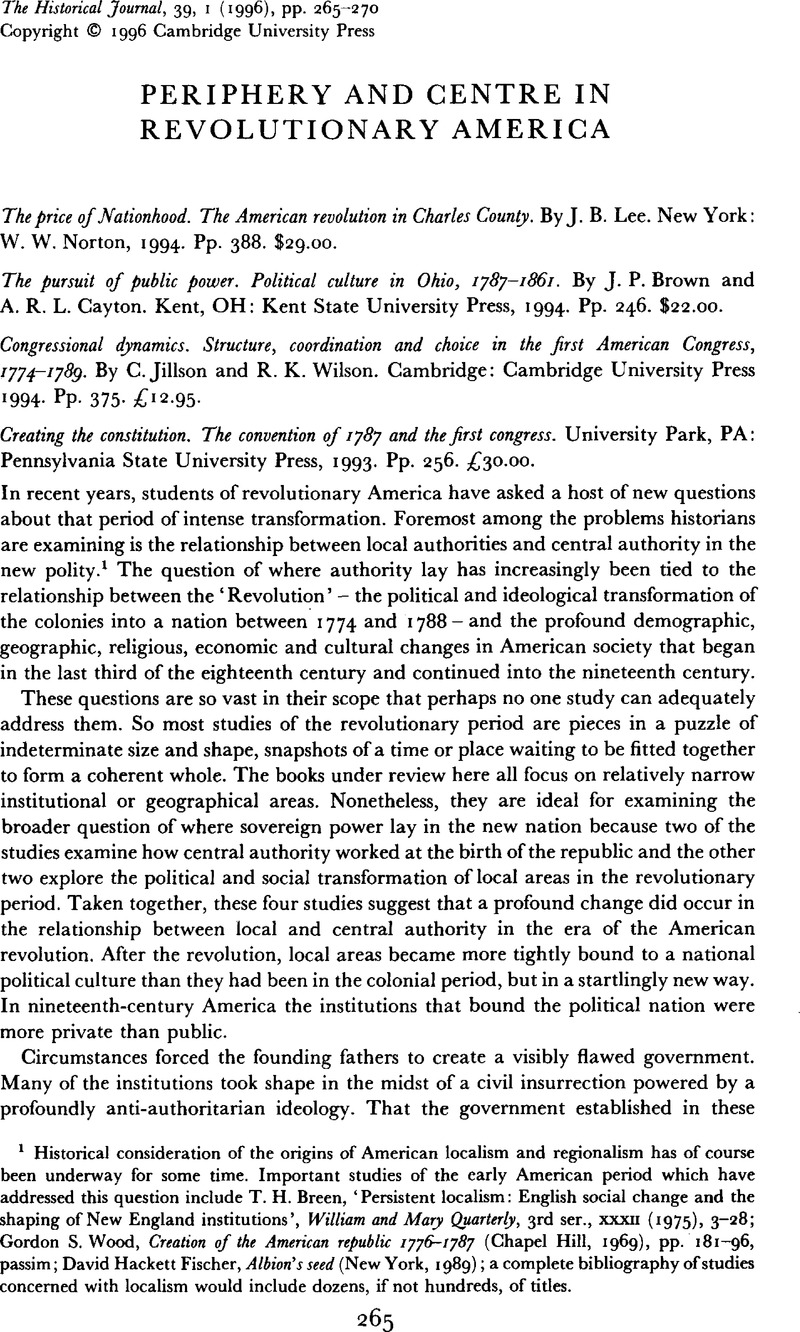No CrossRef data available.
Article contents
Periphery and centre in revolutionary America
Published online by Cambridge University Press: 11 February 2009
Abstract

- Type
- Review Articles
- Information
- Copyright
- Copyright © Cambridge University Press 1996
References
1 Historical consideration of the origins of American localism and regionalism has of course been underway for some time. Important studies of the early American period which have addressed this question include Breen, T. H., ‘Persistent localism: English social change and the shaping of New England institutions’, William and Mary Quarterly, 3rd ser., XXXII (1975), 3–28CrossRefGoogle Scholar; Wood, Gordon S., Creation of the American republic 1776–1787 (Chapel Hill, 1969), pp. 181–96, passimGoogle Scholar; Fischer, David Hackett, Albion's seed (New York, 1989)Google Scholar; a complete bibliography of studies concerned with localism would include dozens, if not hundreds, of titles.
2 There are several errors and omissions in this study which will immediately stand out to historians of the early American period. On p. 26, for example, the two authors discuss the governorship of Massachusetts in the colonial period without mentioning that it changed from an elected to an appointed position due to the revocation of the original Massachusetts charter in the 1680s; after the Glorious revolution, William insisted on continuing the royalization of the colony begun by his unlucky predecessor. On p. 30, they discuss the political structure of New Jersey in the colonial period without recognizing that it changed from one proprietary colony to two (East and West Jersey) in the seventeenth century and these two separate proprietary colonies in turn were reunited to form one royal colony in 1701.
3 William, Beik, Absolutism and society in seventeenth-century France: state power and provincial aristocracy in Languedoc (New York, 1985)Google Scholar; John, Brewer, The sinews of power: war, money, and the English state, 1688–1783 (London, 1989).Google Scholar




